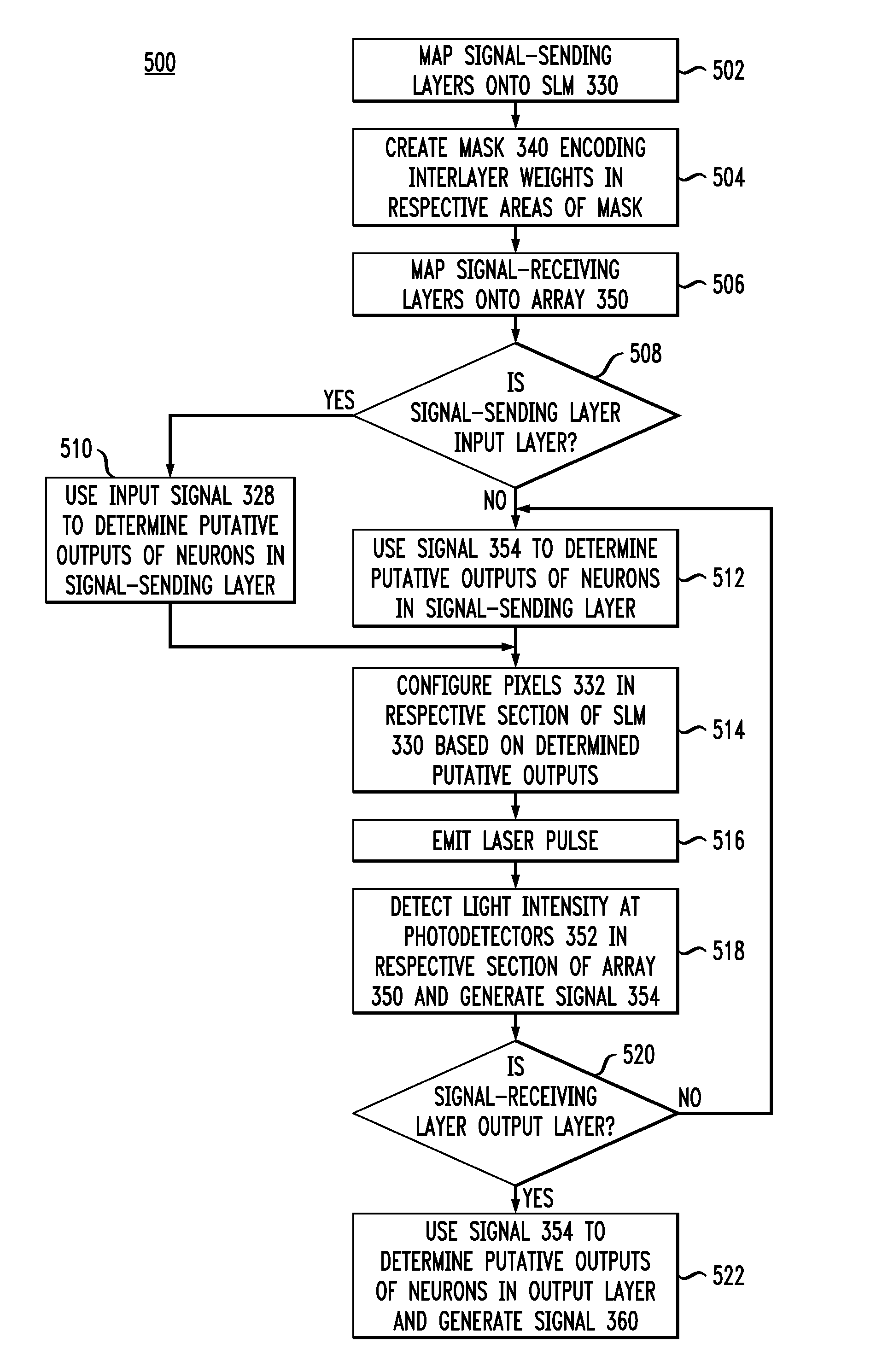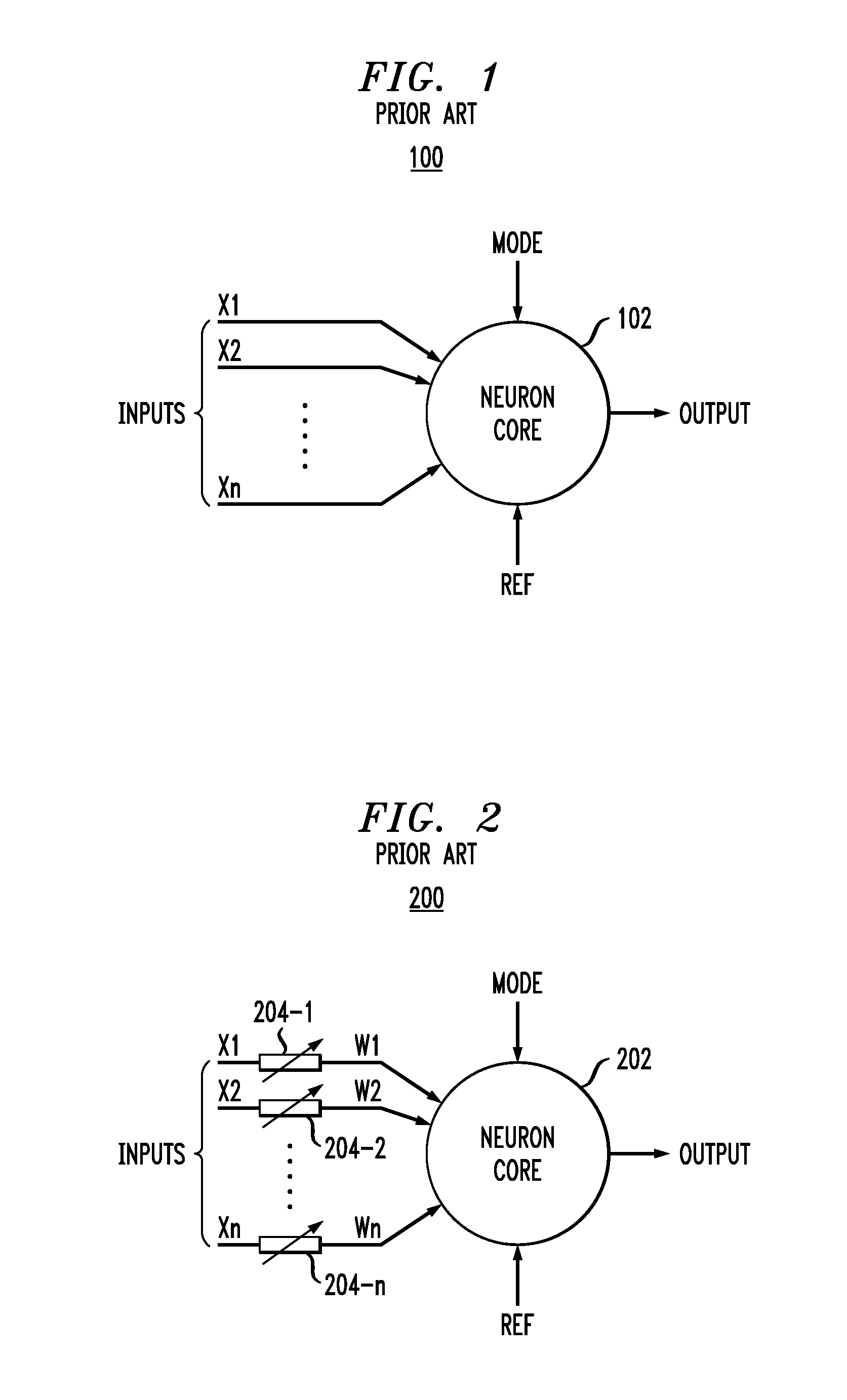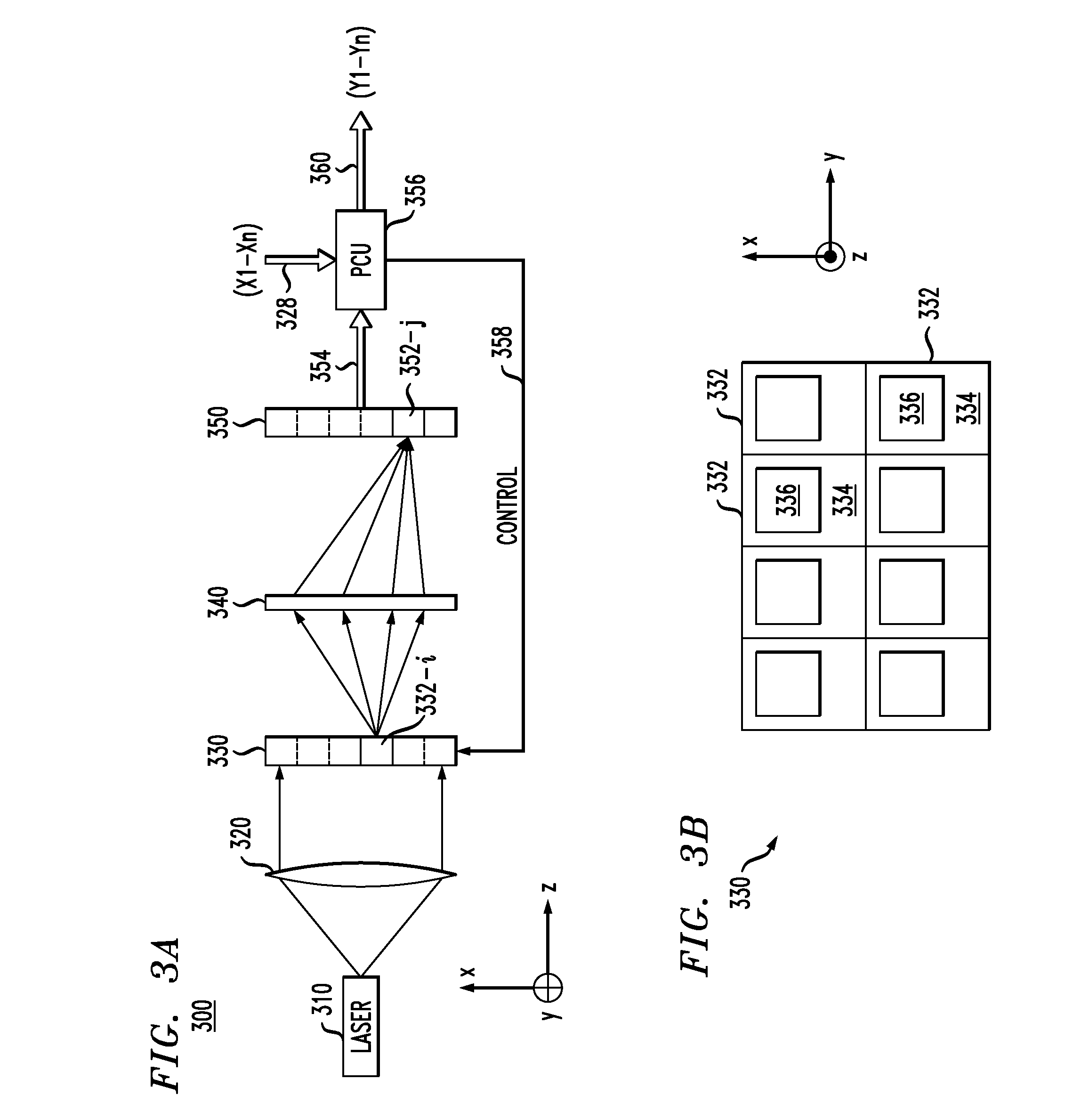Optical processor for an artificial neural network
an artificial neural network and optical processor technology, applied in the field of optical processing units, can solve the problem of emulating ann to have a relatively slow processing speed, and achieve the effect of increasing the processing speed
- Summary
- Abstract
- Description
- Claims
- Application Information
AI Technical Summary
Benefits of technology
Problems solved by technology
Method used
Image
Examples
Embodiment Construction
[0022]FIGS. 3A-B schematically show an optical processor 300 that can be used to emulate an artificial neural network (ANN) having two or more artificial neurons according to one embodiment of the invention. More specifically, FIG. 3A shows a side view of processor 300, and FIG. 3B shows a front view of a spatial light modulator (SLM) 330 used in processor 300. In this subsection, only the basic functions of hardware elements of processor 300 are described. Subsequent subsections describe in more detail how processor 300 can be configured to emulate a particular ANN.
[0023]Processor 300 has a laser 310 configured to generate a beam of pulsed light, which, after being collimated by a lens 320, impinges upon SLM 330. Laser 310 is pulsed at a processing rate of processor 300, which is determined by (i) the transit time of light between the laser and a two-dimensional photodetector array 350 and (ii) the response time of the electronic circuits in the photodetector array...
PUM
 Login to View More
Login to View More Abstract
Description
Claims
Application Information
 Login to View More
Login to View More - R&D
- Intellectual Property
- Life Sciences
- Materials
- Tech Scout
- Unparalleled Data Quality
- Higher Quality Content
- 60% Fewer Hallucinations
Browse by: Latest US Patents, China's latest patents, Technical Efficacy Thesaurus, Application Domain, Technology Topic, Popular Technical Reports.
© 2025 PatSnap. All rights reserved.Legal|Privacy policy|Modern Slavery Act Transparency Statement|Sitemap|About US| Contact US: help@patsnap.com



